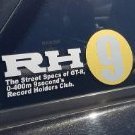R32 GTR Fast Road/Track Alignment
Announcements
-
Similar Content
-
Latest Posts
-
Definitely a good “future upgrade” option if you plan on keeping the car and dialing it in even further.
-
No, you're wrong, and you've always been wrong about this. The Nismo has 2 sets of openings. One is a real 2-way, and the other is a 1-way. There is no 1.5-way possible with the ramps that they offer. A real 1.5-way does exist. That Cusco stuff I posted is a prime example. If the forward drive ramps are, say 55°, and the overrun ramps are, say, 30°, then you will get about half as much LSD effect on overrun than you do on drive. It is real, it realy works. OK, you're slightly right. The Nismo has 55° and 45° ramps on the 2-way, so it does offer less LSD effect on overrun. But, I think that just means that they've (probably) sensibly established that you do not want actually equal LSD effect on overrun. You just want "quite a lot, but not quite as much as the drive LSD effect".
-
By DraftySquash · Posted
Just wanted to unearth this and post my baby with the new front ❤️😝 Took her to my wedding rehearsal today. Next up is getting wide skirts (after wedding) -
Yea, that is what I was getting at in my ramblings too. The nismo one actually is a 1.5 way and a 1 way. They don't do a *2* way because a true *2* way would have equal ramp angles. Or is that a true 1.5 way? Realistically I think a "1.5 way" does not actually exist. A diff can either lock in two directions or one. It also doesn't help that a LOT of people in Australia speak about 1.5 way diffs are referring to their 1 way diff.
-





1.thumb.png.36afd656b26d55f5d425fc76e21561f2.png)

Recommended Posts
Create an account or sign in to comment
You need to be a member in order to leave a comment
Create an account
Sign up for a new account in our community. It's easy!
Register a new accountSign in
Already have an account? Sign in here.
Sign In Now